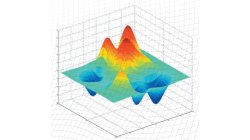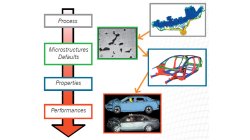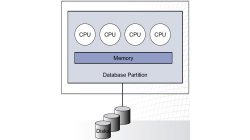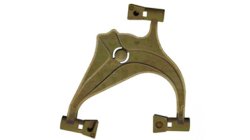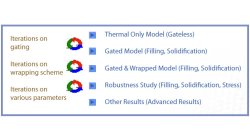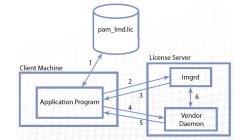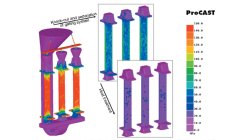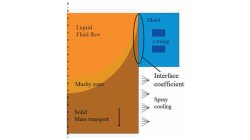- Home
- リソース
- ヒントとコツ
Tips & Tricks
How to fix grey selection window in PAM-STAMP GUI ?
Using default setup of AERO themes in Windows 7 and Vista creates problems for selection by window in PAM-STAMP GUI. There are instructions how to setup your Windows to avoid that problem.
Vladimír
Cerny
Sheet Metal Forming
Process optimization: the future of numerical simulation software
Optimization is becoming a very popular word. However, what does it mean and what does it involve? The goal of this e-tip is to give some keys about optimization concepts and its use in process optimization. In a first stage, we will describe the type of optimization problems that could be solved and in a second stage, the principles and algorithms will be presented. Finally, advantages and drawbacks of the different methods and algorithms will be addressed, with respect to the different types of optimization problems which can be solved.
Casting
Casting simulation: from prototype to performance
Passenger safety in cars, planes and other transportation vehicles is an ethical obligation, a legal issue and a technological challenge. Simulation is a well implemented tool in order to test the behaviour of a car body during crash. The models, including rapid deformation and rupture, are sophisticated and reliable. Currently, most properties used in such simulations correspond to homogenous and defect free materials. However, cars are manufactured before being crashed. And manufacturing routes such as casting, but also stamping, forging or welding, do not provide defect free and homogeneous materials.
Casting
Parallel processing
“To pull a bigger wagon, it is easier to add more horses than to grow a gigantic horse.” This paraphrased quotation nicely expresses the basic concept of parallel processing. The speed of sequential computers has been doubling every eighteen months, according to Moore’s law. However, at any given time, that speed is limited by the state of the art in integrated circuit design and manufacturing. To circumvent that limitation, it is possible to split a given computationally intensive task among multiple processors working simultaneously.
Bohus
Ulrych
Casting
The manufacturing of sand cores
The manufacturing of iron, steel and non-ferrous castings is achieved using a variety of casting process designs, and most of these involve the use of sand cores which form the internal shape of the casting. A good quality casting requires a good quality core. Dimensional stability, uniform density, strength, hardness and permeability are some of the characteristics that need to be controlled. A good core must have suffi cient strength and hardness to be handled and to resist during the pouring of liquid metal. Suffi cient permeability is also necessary for the escape of gases generated during the casting process. The diff erent manufacturing processes and some of the issues related to core production will be discussed here.
Casting
Critical issues in modelling investment casting
Reduce part development lead-times by a better knowledge of process and an early confi rmation of metallurgical capabilities is one of the main topics for investment casting technology. Numerical simulation is one of the major tools which can be used to face this goal. This e-tip illustrates a simulation methodology usable to optimize a casting design in an effi cient and rapid way.
Casting
FLEXlm protection file system
ESI group needs to license, manage and track a variety of licensing options, platform and product dependencies. FLEXlm is one of the only software that is up to this task. A simple, shrinkwrapped license management product would not be powerful and flexible enough to license all ESI products.
Casting
The challenge of simulating casting and heat treatment
Foundries that have implemented casting simulation to shorten development time, further wish to use simulation in order to reduce the cost of subsequent processing steps. This often requires the simulation of heat treatment.
Casting, Welding & Assembly
Why is it important to have coupled stress calculations?
Casting process issues related to hot tearing and cracking of the casting, thermal fatigue of dies and prediction of the final shape of a part are a challenge for foundries. Powerful, multi-physics simulation tools are now available to address them. This e-tip will consider the advantages of a fully coupled thermal, fluid flow and stress analysis of casting, in particular in view of the above mentioned challenges.
Casting
Thermomechanical modelling of continuous casting
Two application examples are showing new possibilities to take into account stress and deformation by the simulation of continuous casting processes. The variability of the presented examples prove that the proposed method is not limited to a certain class of applications, dimension and alloy composition. Since the gap formation can now be taken into account, the results are expected to be much more precise. This approach opens a wide field of application in order to better understand and control the heat transport in continuous casting processes.
Bohus
Ulrych
Casting

